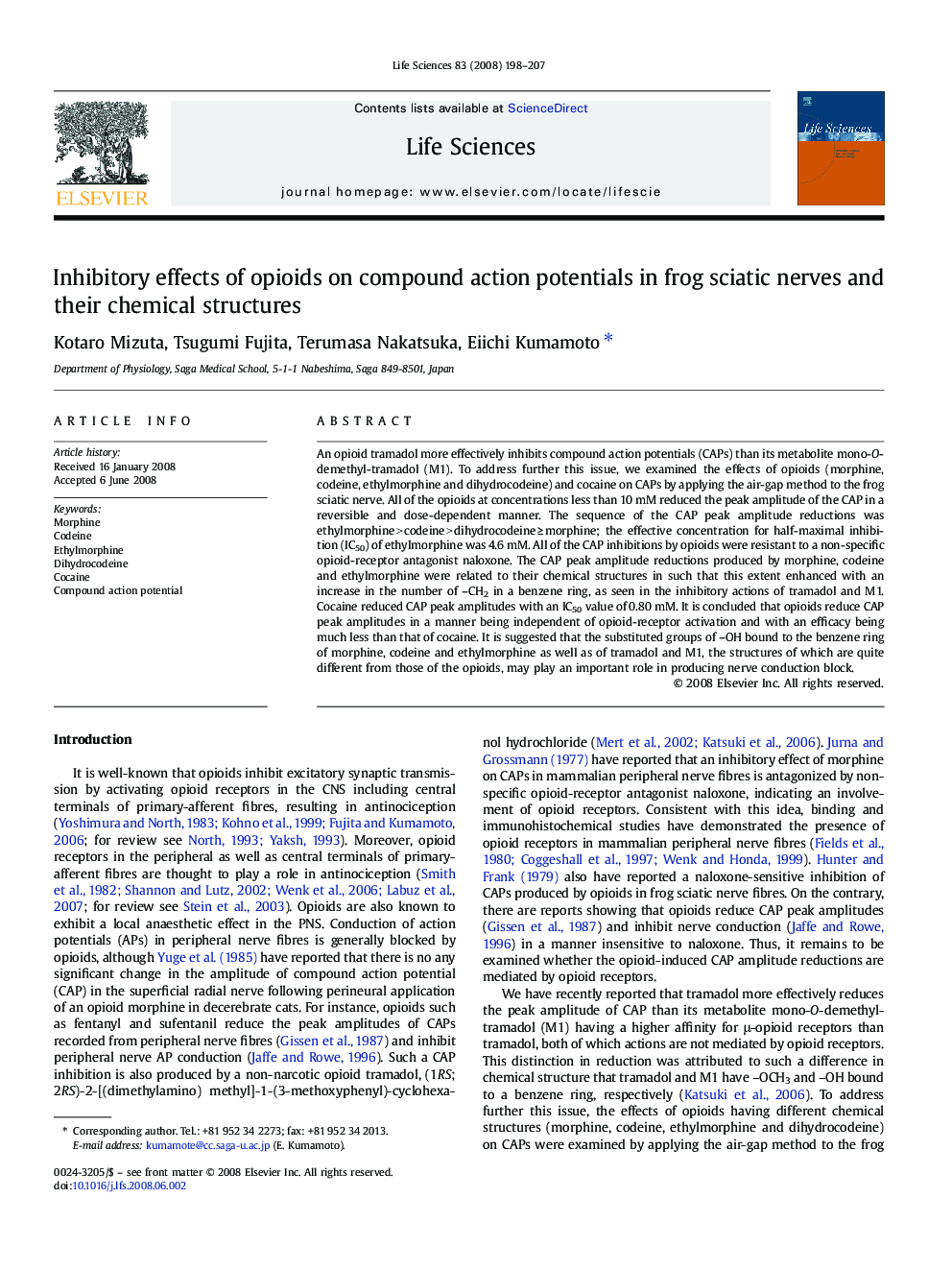| Article ID | Journal | Published Year | Pages | File Type |
|---|---|---|---|---|
| 2552844 | Life Sciences | 2008 | 10 Pages |
An opioid tramadol more effectively inhibits compound action potentials (CAPs) than its metabolite mono-O-demethyl-tramadol (M1). To address further this issue, we examined the effects of opioids (morphine, codeine, ethylmorphine and dihydrocodeine) and cocaine on CAPs by applying the air-gap method to the frog sciatic nerve. All of the opioids at concentrations less than 10 mM reduced the peak amplitude of the CAP in a reversible and dose-dependent manner. The sequence of the CAP peak amplitude reductions was ethylmorphine > codeine > dihydrocodeine ≥ morphine; the effective concentration for half-maximal inhibition (IC50) of ethylmorphine was 4.6 mM. All of the CAP inhibitions by opioids were resistant to a non-specific opioid-receptor antagonist naloxone. The CAP peak amplitude reductions produced by morphine, codeine and ethylmorphine were related to their chemical structures in such that this extent enhanced with an increase in the number of –CH2 in a benzene ring, as seen in the inhibitory actions of tramadol and M1. Cocaine reduced CAP peak amplitudes with an IC50 value of 0.80 mM. It is concluded that opioids reduce CAP peak amplitudes in a manner being independent of opioid-receptor activation and with an efficacy being much less than that of cocaine. It is suggested that the substituted groups of –OH bound to the benzene ring of morphine, codeine and ethylmorphine as well as of tramadol and M1, the structures of which are quite different from those of the opioids, may play an important role in producing nerve conduction block.
